(This post is by Mark Paricio, a PolarTREC teacher accompanying the Polaris Project this year.
To read all of Mark’s posts, go to: http://www.polartrec.com/expeditions/siberian-arctic-systems-study )
Fun Highlights of Our Trip to Cherskiy
I left Denver, Colorado at 12:56 a.m. on Tuesday, June 26th and arrived in Cherskiy at 1:00 p.m. on Sunday, July 1, 2012. Below are a few of my favorite highlights of the trip with the Polaris Project that didn’t make previous journals:
Our First Arctic Sunrise
Just past the midpoint of our 9-hour flight from JFK airport in New York City to Moscow, Russia, I was fortunate to look out of my north-facing window at sunrise. I thought it was interesting that the sun was rising in the north-northeast. At this point, we were just west of Iceland. It was a memorable sight.
QUESTION: When is the Shortest Path between Two Points is Not a Line?
Below is the depiction of the path our airplane flew between New York City and Moscow as shown by the television screen in the plane. In fact this is the position of the plane during the sunrise shown above. Why did we take a “arc” between these two cities instead of a line?
ANSWER: When two points are on a sphere like the earth, there is no straight line that will get you there. If you can, get out a globe and check it out. Find the path of the shortest arc to get you from New York to Moscow – it goes pretty close to Iceland!
QUESTION: Why are the satellite dishes in Moscow pointed almost horizontally?
While driving around in Moscow, the physics teacher in me was intrigued by the nearly horizontally aimed television satellite dishes on the sides of the buildings. In Denver, Colorado, we aim them more up than horizontal. Why is this?
ANSWER: The answer to this question also depends on the fact we live on the spherical earth instead of a flat plane. Moscow’s latitude is over 55° N, while Denver is slightly less than 40°N. Television communication satellites are located above the equator in order to orbit exactly once per day (this is known as a geosynchronous orbit) so that your satellite dish can always be aimed at the same satellite. If you lived on the equator, you would aim your dish essentially straight vertically upward. The farther north you live, the more southerly you must aim your dish to line up with the satellite that covers your region. At some point moving northward, the curvature of the earth will get between your location and the position of your satellite. Polar scientists who study near the North or South Poles, can’t get satellite television!
Moving the Baggage for 32 Polaris Project Members was a Monumental Task
Each member of the Polaris Project was allowed one 20-kilogram bag (44 pounds) to hold everything we needed for our month in Cherskiy. Including a bit of extra scientific gear, we had well over 2000 pounds of bags to move every time we landed or took off.
Many times, we had to carry these bags great distances between terminals or even to the airplane in Yakutsk, Russia. We became quite efficient at making long lines to move the luggage!
Visiting the Cockpit During our Flight to Cherskiy
Thanks to our fantastic Russian interpreter, Woods Hole Research Institute scientist Ekaterina Bulygina, we were allowed to visit the cockpit during our flight from Yakutsk to Cherskiy. This is an unheard of experience on American planes!
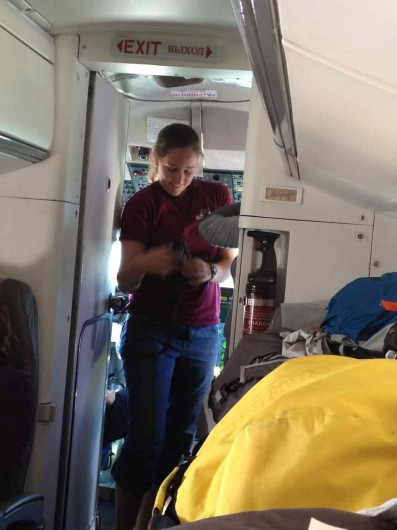
Lindsey Parkinson of Western Washington University exits the cockpit on our final flight to Cherskiy.
Our Last Sunrise on the Way to Cherskiy
None of us was too excited about waking at 2:40 a.m. from our hotel beds in Yakutsk, Russia to catch the bus to the airport for our flight to Cherskiy. However, it is a little easier because it wasn’t dark and all of us had already flown through at least a dozen time zones in the past few days. However, while riding on the bus to the airport, the sun rose in magnificent fashion at 3:44 a.m. – an early treat!
Though I am now writing from the Northeast Science Station in Cherskiy and am extremely glad to be here, the journey itself was a team-building adventure for the Polaris Project!
Stay curious my friends! – Mark Paricio

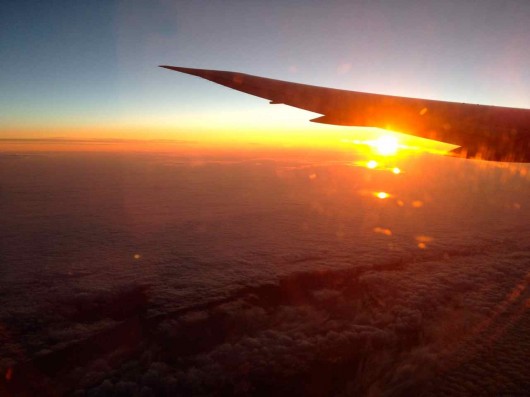
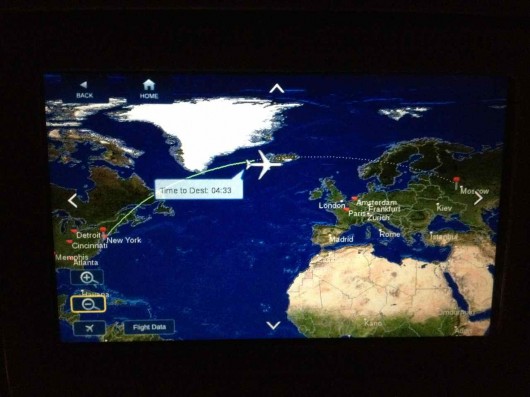

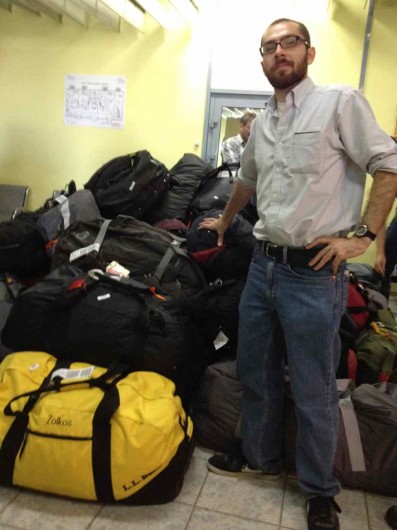
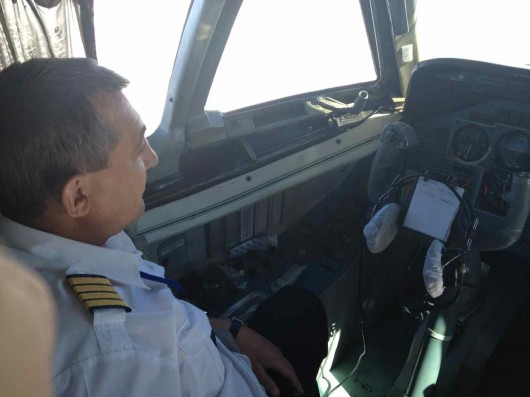




Comment(1)-
Lu-Ann Monson (Seth's aunt) says
July 26, 2012 at 8:08 pmLooks like you’ve had quite an interesting adventure! Can’t wait to hear the stories and see the pictures. Safe travels to all!